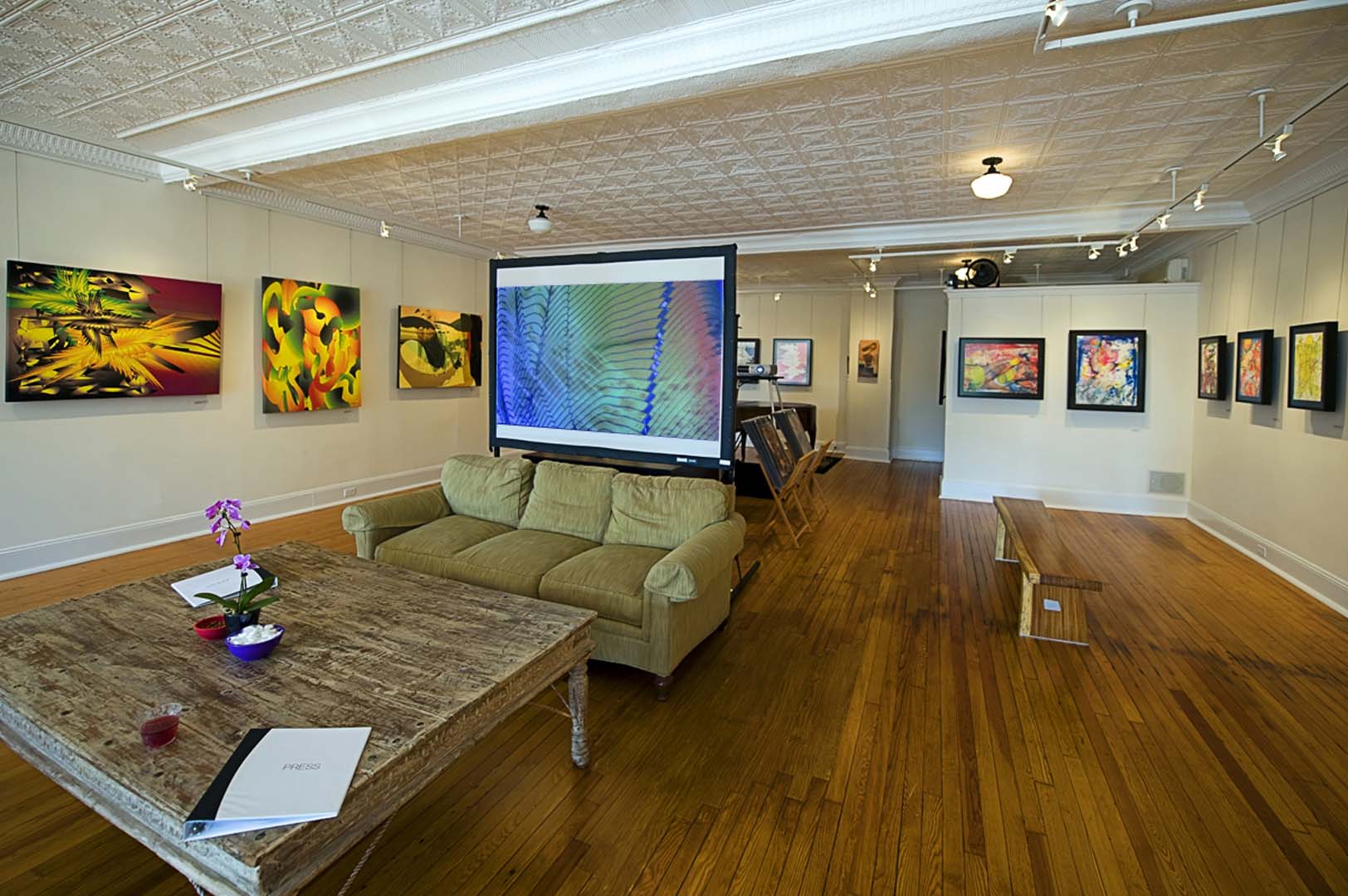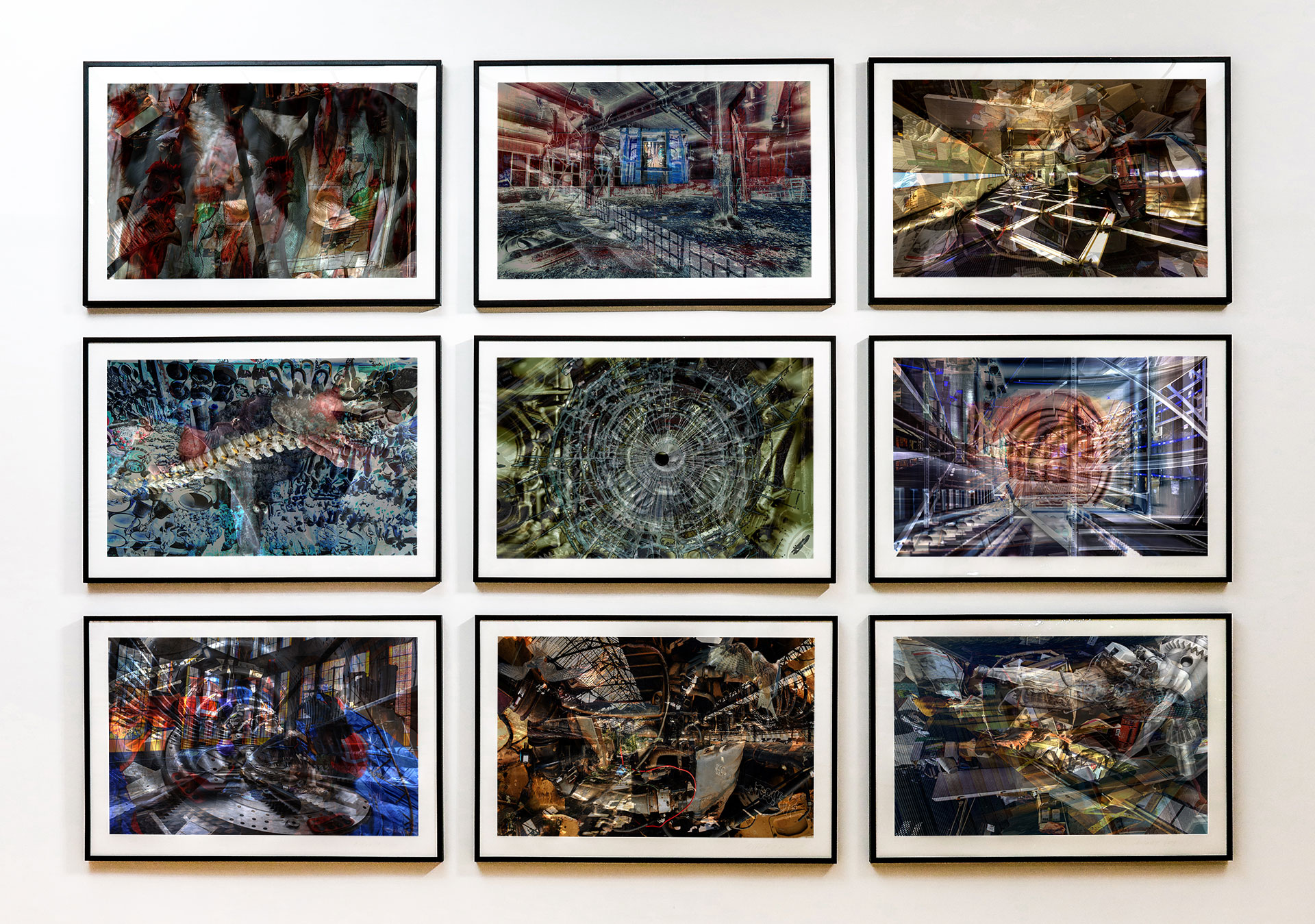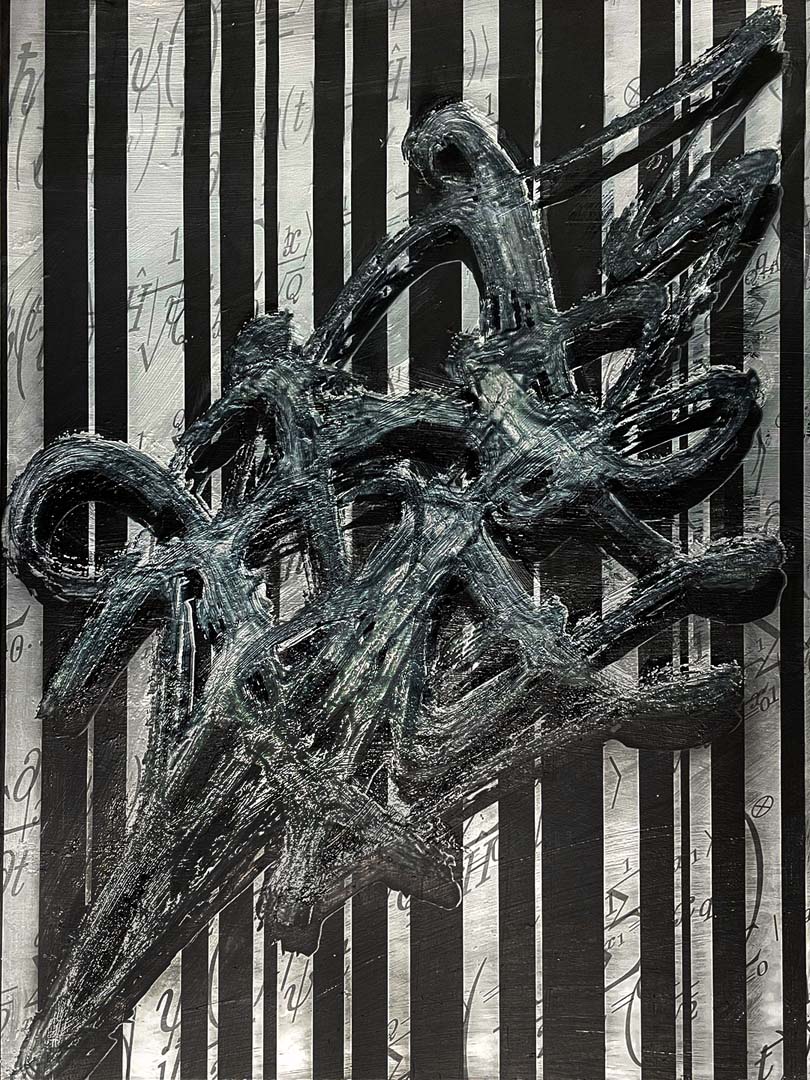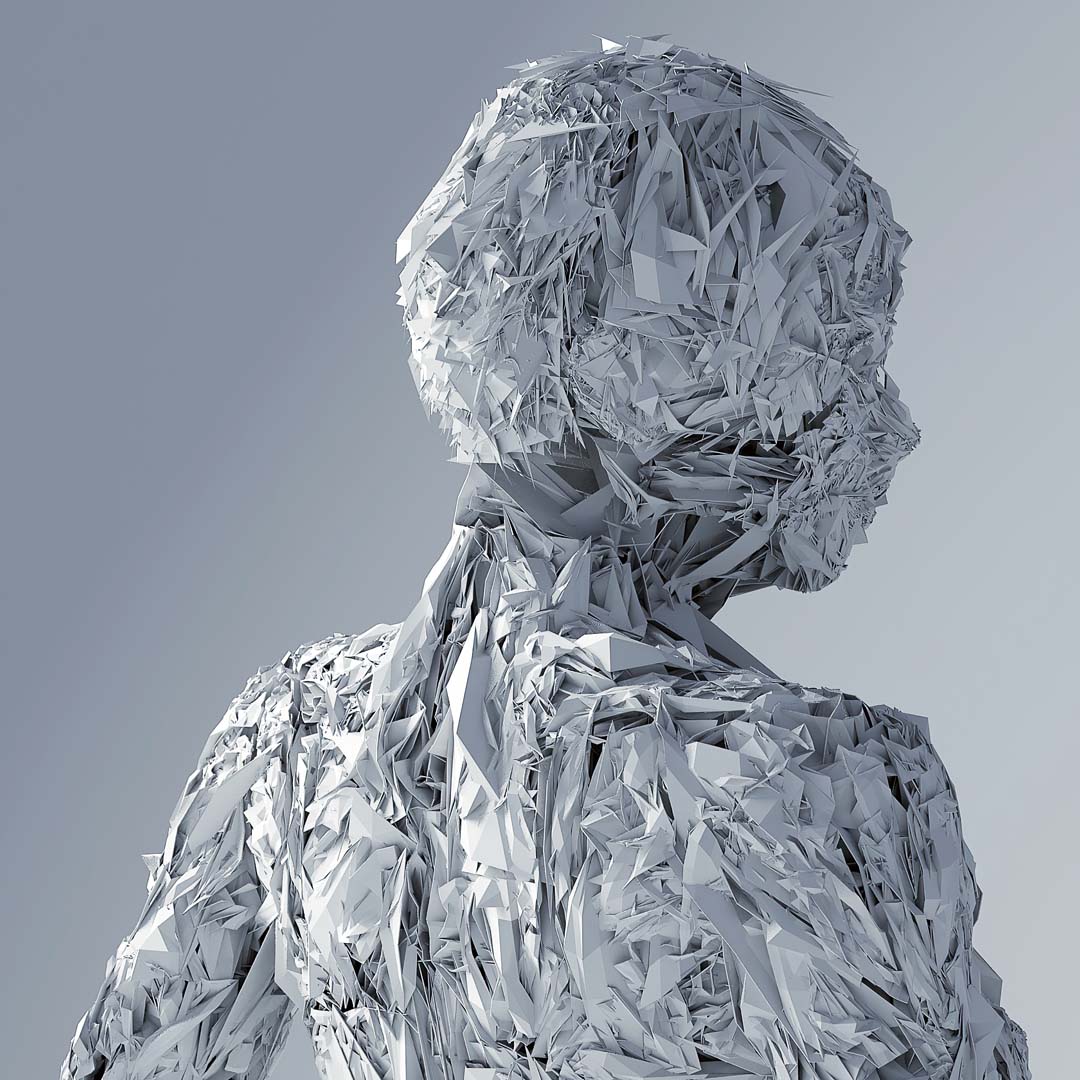NFT Now – Exhibition Essay
Live Exhibition Opening on Zoom: 5/5/2021 – Watch on YouTube
Curation and Essay by Anne Spalter
NFT Now presents one snapshot of the state of the art in NFTs. Without any claims to comprehensiveness, these works nevertheless offer a sense of the breadth of approaches and the artistic depth emerging in this new space.
Connected to art history yet facing toward the decentralized future, the works offer everything from visceral emotion, crypto critique, exploration of nature and the built environment, climate change, social and technical commentary, firearms, lost love, time, archeology, formal aesthetics and color theory, female empowerment, artificial intelligence in many forms, human relationships, the subconscious, portraiture, still life, artistic views of data, our mortality, and last but not least, humor.
The tools used by the NFT Now artists range equally broadly, from text and conceptual approaches to computational photography, programmed simulations, generative series, 3D models, data-driven visualizations, hand drawn and painting pieces, spray paint, augmented reality, animation, custom robot-painting inventions, original audio, digital collage, atomic collisions, and even the decay of qubits in a quantum computer.
Nearly half the artists are women, a great sign about the future of this field. Their work additionally often shows strong female imagery and messages, a positive influence on all artists.
The contributors hail from not just from the US but Canada, Europe, Eastern Europe, Australia, Asia, and the Middle East, emphasizing the global nature of this new decentralized art world.
Any one of the works could be held up as emblematic of the entire show, despite their obvious differences, and such there is no particular hierarchy or order required to view them. The Kunstmatrix 3D environment provides an overview and also has a 2D mode. To fully experience each NFT, however, click through to its original file. This is especially important for those with high resolution imagery, motion, sound, and other features.
Works and Themes
French artist Coco Dolle takes on feminist issues directly through the female form. Dolle creates a bucolic composition in Twirls and Blondes – The Mignonnes merging pin-up style, pop culture and film noir in an animated digital collage inspired by the work of Niki de Saint-Phalle, “Les Nanas”, which was transgressive to a patriarchal view of women in the mid 20th century. Roz Dimon and Negin Ete collaborated to bring US and Middle Eastern perspectives to the “Surrender Dorothy” phrase from the Wizard of Oz movie. Both agree not to surrender!
Linda Behar in Isolation Time, portrays a female form in a clock-like animation. Through her work she explores contradictions, focusing on body language and body shape.. One of her goals is to create images that echo the past, confront the present and embrace the future. Her process for this work began with the 3D video game character software Poser and included Photoshop, laser cutting printing plates, and traditional printmaking methods.
Several artists bring technology to bear on our perceptions of nature. Andy Thomas’s Parrot Abstract 2 is a unique melange of photography and 3D models inspired by the sights and sounds of his travels to the far north of Queensland Australia. Kate MacDonald’s surrealist Octavia combines garden debris, detritus, and the bodies of birds, capturing a host of ideas. Particularly inspired by Les Nabis’ depictions of nature, her work explores recurring themes of redemption, grace, and metamorphosis.
Surrealism is a frequent theme in NFT art and several pieces here draw on that period of thought. The Patient Lake portrait by Solos (Jeremiah Palecek and global nomad Dennison Bertram), which is part of the Saturnalia project, utilizes determinism and non-determinism to create a painting that is largely free of any sort of rational control. The painting itself is composed of a visual dataset taken from Jeremiah’s oeuvre which have been sliced into thousands of pieces. Using the identity of the collector (minter) as the primary input source of entropy, the slices are then recomposed into a new painting, making it not only a collaboration between Dennison and Jeremiah, but also the collector. (The algorithm uses the minter’s transaction hash as part of the data in the generating process.)
In Cave Painting (28/03/2021) by British/Columbian Plummer-Fernández the Surrealists meet Plato in a custom neural network that projects visions onto imaginary caves. Sean Mick’s Etidorhpa draws on the cult science fiction novel of the same name (Aphrodite spelled backward) and with Mick’s custom animation programming visually depicts that author’s interest in mind altering substances and transcendence of the physical realm.
Giovanna Sun’s dreamy animated collage Una Notte A Napoli-Luna Sea Video is part of a collection inspired by the Italian love song Una Notte A Napoli. The song tells the story of a girl who met an angel without wings. The angel nevertheless “took her to heaven,” but ended up breaking her heart. She looks up from the earth and resigns never to love again. Sun imagines that “we will live in the water in the future, our space is the space under the sea and overlapped with space, and our memory can last forever.”
Photographers are used to having their art form questioned so perhaps naturally have gravitated toward the computer and new technical fields. Gisel Florez, a first generation Cuban American, was an early creator of NFT art. Lightform in Blue Brown & White began her search for the expansion of light and time within the moment of capture. Pinning down this millisecond of time following a curious moment expanded into a lifelong pursuit. This abstract moment in time was created with cardboard, light, a blue gel & 4×5 digital camera. In Automated Digital Photo Collage of Horse Stable on 38th Street Tommy Mintz explores the ways in which our individual memory and collective understanding change through spending increasing amounts of time interacting with digital images. By using algorithmic photography in both the landscape and street traditions, he raises questions of our understanding, perception, and memory of contemporary spaces. The decisions the algorithms make can create strange things that a human would not decide to include. Where the incongruities arise, there are interesting new forms created, natural to the digital image.
Using one of the oldest known color photographs as the backdrop, Clive Holden’s Internet Mountains 50B unites his interest in the innovations of the en plein air landscape painting movement in mid-19th century France with early landscape photography, where people hiked into alpine locations with heavy cameras. This was a physically strenuous activity required to capture the image of a mountain. He loves the tension between those artists versus today’s who are working with intangible landscapes, in a new kind of countryside.
Canadian Martin Lukas Ostachowski explores the architecture of blockchain technology and its potential for fair global distribution of opportunity and wealth with cloud photography, streamlined graphic design, and conceptual data visualization. Cloud Hash Three visualizes Bitcoin’s SHA-256 hash algorithm as motion-based concentric cloud animations. Designed by the NSA, the SHA-256 algorithm creates a unique fingerprint of any text or file mathematically. In the animation, the input image in the centers turns in 70 degrees intervals, and the hash algorithm creates entirely different iterations and output hashes. To make the Cloud Hash tokens as distinct as their hashes, Ostachowski teamed up with Colorado-based audio engineers Alex Scott and Callum Bair to create ambient sound.
Artificial intelligence has become an exciting new tool for artists and it is only natural that it be combined with the blockchain. In Austrian artist Alexandra Ehrlich Speiser’s series Machine Dreaming: Useless Weapons, she fed an AI with images of various weapons. This trained network then reflected images back. After hours of training the results could pass as plausible firearms, the interesting parts for the artist were the “in between spaces“, the dreaming status of the AI. Both AI and weapons trigger many fears. Will there be a revolution of machines that will erase humanity? Stalking the AI whilst designing new weapons, lurking behind the process of discriminating and recognizing patterns will still leave us with a sense of having control over machines.
Anne Spalter also worked with an AI process in CONTROL, one she trained with images of airport control towers. The modern built environment and its sphere of influence contrasts with the ever-increasing heat of the sun. An airplane taking off is distorted by unseen forces. Migrating birds pass through. The Josh Craig’s original audio provides a pulsating energy, a mysterious, evocative and somewhat menacing aural soundscape that immerses the viewer in the machine’s latent space.
Perhaps the most innovative use of AI in the show is Pindar Van Arman’s robotic painting, AI Imagined CryptoPunk #2. Crypto punks were one of the first NFT series and have become extremely valuable. In this commissioned portrait, van Arman’s computer-controlled painting machines have grown beyond being simple assistants and are now effectively augmenting his own creativity, as well as having creativity of their own. They have become a generative AI art system so sophisticated, that it has forced him to consider the possibility that all art is generative.
A machine that makes art has been the subject of science fiction and the object of fear for many decades. The pioneers of computer art faced enormous hostility toward their efforts to create computer drawings based on algorithms they had created. The NFT world seems to be changing collectors’ views about generative art at last. As funds come into the space and young artists are passed the baton, a continuous chain from the earliest days of digital art history is forged. Two artists in the show have taken generative art a step further into the NFT world with on-chain algorithms that mint new works on demand, both using the platform Artblocks.io. The collector does not know what the piece will look like until it is purchased. Jeff Davis’ Color Study series of 2000 images (Color Study #821 is shown in NFT Now) uses an algorithm to randomly determine compositional elements related to size, quantity, color, placement, and grid density within specified parameters. His art explores geometric structure and color arrangement through computation and iteration. He is also the author of the book “Foundations of Color”.
Another artist minting on-chain algorithmic art on demand is Simon de Mais. Spectron #228 is one of 400 Spectrons. The series was inspired by video art from the 60s and 70s, especially early analog video synthesizers, and in particular the EMS Spectre, an instrument from 1974 that combined analog signals with digital logic. It was notably used by Hayao Yamaneko (a pseudonym for Chris Marker) in his masterpiece film Sans Soleil. Although created with modern technologies, Spectron shares procedural logic with its analog ancestors.
Although he chooses which output will constitute the final pieces, Tyler Hobbs also works generatively. Esthesia 0.1 is an output from his custom generative program that was heavily inspired by the abstract expressionist painters, particularly Joan Mitchell. Her wild, vibrant mark making had an undeniable energy, and was a visibly direct capture of expression via paint. Working generatively, Hobbs doesn’t have the option of expression “in the moment” in that same way, but instead, must look for programmatic output that captures the spirit of what he is hoping to express. The style of this work was also inspired by Lichtenstein’s stylized “brush stroke” works. Certainly a generative program is no longer working with real paint, but it is interesting to see how the essence of that material is translated and warped in the new medium. He asks, “Is our historical reverence for paint at all related to its visual structure?”
John F. Simon Jr. also uses custom software, but in the case of Traffic Boogie Woogie, to design a simulation. Simon’s program creates emergent patterns of vehicular traffic with rules for stop lights, lane changes, and collision avoidance, inspired by Mondrian’s Broadway Boogie Woogie painting (1942-43) and concept of “dynamic rhythm”.
Everyone knows there has been a lot of hype about NFTs and artists have reacted in many ways including wry commentary like that from Alysia Davis who minted her Bro spray paint painting. She has extended the concept of graffiti to the blockchain in this ironic yet aesthetically compelling homage to all the crypto bros supporting this new field. In Crypto Abundance Michaël Borras (aka Systaime) offers an maximalist mashups of visual and audio (“I am a magnet for success and prosperity”) internet and crypto aesthetics, an ecology of information, images and comments from which spring the patterns that dominate today’s Digital Pop culture and our “Happycracy.”
Finally Ambre Kelly, in a emotive digital still life digital painting of tulips entitled Bubble Bubble Pink, touchingly and succinctly comments on the entire often discounted genre of still life painting, the great tulip mania during the Dutch Golden Age (for two months in 1636-37, tulip bulb prices inflated exorbitantly due to the craze, leading to what is considered the first great financial bubble), and that mania’s potential relevance to the NFT craze going on today.
NFTs are inherently conceptual and immaterial but artists Jonathan Paul (Desire Obtain Cherish) and Patrick Lichty stress this aspect. DOC’s Everything You Know is Wrong is part of his Gross Domestic Happiness series, which portrays an information meltdown of society. Adapted from a video installation in his “Horn Of Plenty” show in Los Angeles in 2019, his debut NFT’s are an array of sayings, truisms, un-truisms, oxymorons, soothsayings, and aphorisms. The works draw on the text-based art traditions of Jenny Holzer, Ed Ruscha, and Christopher Wool. In These 7000 Oaks Don’t Exist, Litchy uses artificial intelligence in an animation of fictional morphing trees to reflect on the environmental message of Joseph Beuys’ 7000 Oaks project (40th anniversary next year) and its applicability to the present-day concern of blockchain energy usage.
Snow Yunxue Fu and Liyu Xue both address our corporeal bodies and struggles to maintain well being in cyberspace and today’s technically driven society. Fu’s ConjoinOne is comprised of two floating liquid forms in the shapes bodies, together at times and then disintegrating into other objects and parts, underlining the connectivity we have with one another, in both material and immaterial ways. Xue offers an overwhelming yellow composition featuring a futuristic headdress and entitled Sensory Overload I. Liyu adapts psychologist Ricardo Manzotti’s Mind-Object Identity hypothesis: “our experience of an object is not where the body is, but rather where the object we experience is. Experience is an external object, a physical phenomenon”. His Sensory Overload, 2021 collection is a visual construct of the machine merging with human flesh and our bodily presence and extending the human sensory capacity.
Critics have frequently pronounced painting dead, but you can’t keep it down. Australian Sue Beyer and Croatian Maja Kalogera bring painterly sensitibiles to their NFTs Kalogera’s longtime multimedia explorations have found a home online in lush painterly immersive experiences like Emil and Joan went for a Beer. Morphing, dripping, flowing color ensure that painting will always be around even though it may take new forms. Beyer takes historically important Australian paintings as her starting point and uses the computer to abstract and animate them. With this method she “explores transitional liminal space…. Postdigital strategies are used as a metaphor for the permanent alteration and ultimate transformation of the landscape and our society as we know it.” (See Transformer 1.)
Davonte Bradley also keeps the tradition of painting alive with a Basquiat-inspired piece that moves on to Bradley’s own style of mark making and digital “hand.” Colin Goldberg, originator of the term Techspressionism, takes his Expressionist-inspired digital works and explodes them in animated 3D layers with original audio, creating an immersive version of an Expressionist-style painting experience. Mesmertron is a vector drawing based on a diverse range of sources, including old-school NYC subway graffiti and Paleolithic cave art. The original soundscape contains samples from NASA’s Discovery program missions.
Erin Ko’s artifact entitled Anubis from the future past is a stone tablet resembling an iPad but with futuristic markings. Part of her Codex series, these recovered future artifacts hold symbols of our lost and changing world. They contain sounds and images, their secrets to be unlocked by viewers’ own phones. A series on the changing nature of communication and digital privilege.
Carter Hodgkin and David Young (aka Triplecode) both take atomic or subatomic matter as a starting point. Carter’s NFT is a section from a larger work, The Nine Bend Stream, based on a painting of famous mountains in China at the Metropolitan Museum in NYC. The volcanic depictions of mountains and spatial relationships in Chinese Literati paintings inspired her to form a moving composition using simulated atomic particle collisions. Hodgkin writes her own code to generate atomic particle collisions. This manipulation becomes a drawing process where parameters are set and random moments of collision are captured. In employing randomness in her creative process, she draws inspiration from Jean Arp and John Cage.
Young’s work Q6 is a visualization of “quantum noise” — the effects of running code on actual IBM Quantum Computers, as the qubits decohere. He then visualizes that data with his own Processing code. Young believes “that one does not need to be a technical expert to engage with a new technology. But that by working with it you can develop a non-technical intuition for how it works, and through art and aesthetics, develop a new imagination for what it can become.” “NFTs, and the blockchain in general, are built on cryptology that is virtually impossible to break with classical computers. However, when we reach quantum supremacy, it will be child’s play to break that security. So the current belief in NFTs’ infinite stability, may be another example of… a techno-utopian fantasy that they offer a perfect solution. In the end, quantum computers may render NFTs to be little more than digital dust.”




